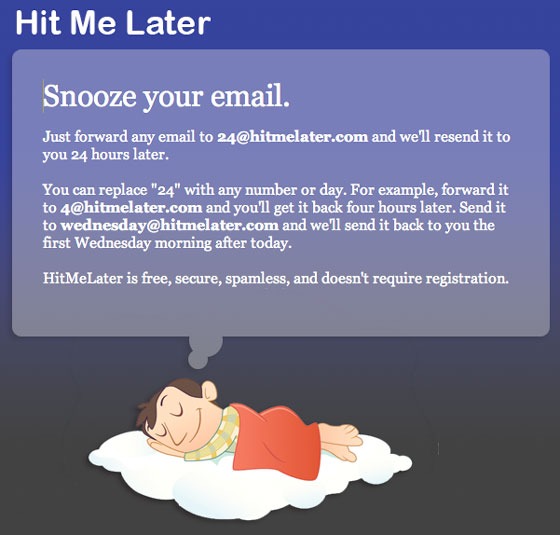For those of us who are active Google Talk (GTalk) users, sometimes chatting is not enough. Luckily, there are tools to make your GTalk experience more interesting like VOIP, translations, and more. Here are 10 third party tools and special features that will help you get the most out of the service.
Which ones are your favorite? Know any more? Tell us in your comments.
Extended Talk
Extended Talk is a free addon for GTalk that brings in enhanced features such as making your chat windows transparent, changing font colors, message and typing areas, creating text filters, using smileys, and custom images. It also provides shortcuts to insert dates, time, IP address, email, etc. in your messages. Overall, the addon is non obstructive and fits quite well with the GTalk interface, while providing a few handy extra features.
Google Talk Shell
Google Talk Shell is another GTalk addon with some extra features that you might like. Firstly, it allows you to add several avatars and make them rotate in short intervals in your GTalk application. You can auto-hide the GTalk main window so that you have a large work area, or you can configure GTalk to always be on top of the desktop. You can also run several GTalk user names simultaneously using this addon. There is even an anti-boss hotkey to hide the GTalk window quickly.
Translation bots
Translation bots are described by Google as pieces of software that act as chat contacts and provide some fun or useful functionality. Whenever you need to translate any word or sentence from one language to another, you can send that as a message to one of the appropriate Google Chat translation bots. The bot then acts as a translator and replies to the translated version of your message. Of course you need to add the translation bot as your GTalk contact beforehand.
Currently there are 50 bots available in two language pairs. The names of the bots have been made of two letter abbreviations of languages, the English to French translation bot is ‘en2fr.’ To add the bots as contacts, you simple need to add the email of the specific bot in this format: name_of_the_bot@bot.talk.google.com. For example, for English to French bot, it’s ‘en2fr@bot.talk.google.com.’
Transliteration bots
Transliteration bots are somewhat similar to translation bots, but here they convert English sentences to scripts of various Indian languages like Hindi, Kannada, Malayalam, Tamil, and Telugu. You can add the bots using their names ‘en2hi’.translit, ‘en2kn.translit,’ ‘en2ml.translit,’ ‘en2ta.translit,’ and ‘en2te.translit,’ ending with ‘@bot.talk.google.com’.
Chatback Badge
Chatback badge is a nice little tool from Google that you can use to chat with non-Google users. The badge can be put on your blog, website, or anywhere you can embed an html code, and it will display your online status along with a ‘Chat with me’ message in a nice chat bubble. You can create the chatback badge in
different styles as well
. GTalk Sidebar
GTalk Sidebar is a convenient way of chatting with your GTalk contacts using the Firefox sidebar. Every chat window opens in a new tab in the sidebar itself. You can make the GTalk application pop out in a new window if you wish. Although GTalk Sidebar doesn’t provide any additional feature, it can be another nice alternative, just in case you don’t want to open a Gmail window on your browser and don’t have the desktop client installed. An alternative to this addon is to save the GTalk Gadget as your Firefox bookmark and set the bookmark to load in the sidebar.
GTalk Profile
GTalk Profile is an online service that you can use to find other GTalk users from across the globe. You can simply click anywhere on the world map provided at the GTalk Profile site to look for users in that area. You can also look for users using its search box.
Ping.fm
Ping.fm is not an exclusive GTalk application. What it does is update your status on as many as 21 of your social sites including Facebook, Twitter, Jaiku, Wordpress, Tumbler, Pownce, Blogger, Plurk, Xanga, Friendfeed, etc., and even Mashable, simultaneously. All you need to do is add Ping.fm as a contact in your GTalk application and send it to your status update as a chat message. You also need to create your account at Ping.fm and add your social profiles so that it can do the posting for you.
GTalk to VOIP
GTalk to VOIP offers a number of free and paid VOIP services that you can use with your IM tools including GTalk, Yahoo Messenger, and Live Messenger. These include incoming calls to your IM tools from any mobile, landline phones, or Web services; outgoing calls to SIP phones, Internet radio, video conferencing, offline messaging, IM interoperability, SMS service, etc. Payment can be completed through Paypal.
Inezha
Inezha allows you to use your Gtalk application as a feed reader. Simply send the RSS feed url to the Inezha bot on your GTalk and ask to be notified on all future updates. You can also access you online account at the Inezha site and add the feeds you want to subscribe to. There are also Firefox and Internet Explorer bookmarklets and widgets that you can add to your blog. Inezha also provides a social networking feature where you can add your friends and subscribe to their updates.
Courtsey: Mashable
 It’s tough being a competitor to Gmail. Google has been the first major company to offer virtually unlimited storage for e-mails, and the simplicity of the service, solid spam filtering and good integration with other Google services has made Gmail a favorite for many.
It’s tough being a competitor to Gmail. Google has been the first major company to offer virtually unlimited storage for e-mails, and the simplicity of the service, solid spam filtering and good integration with other Google services has made Gmail a favorite for many. 
 OnSugar is a new blogging platform with a twist. The service has added several functions usually found on other social networking sites so that it feels like a blend of WordPress mixed with Twitter. For example, on the homepage you can view the public timeline which updates with posts from all blogs or just those you follow. You can also follow bloggers and their blogs and send them private messages (just like Direct Messages).
OnSugar is a new blogging platform with a twist. The service has added several functions usually found on other social networking sites so that it feels like a blend of WordPress mixed with Twitter. For example, on the homepage you can view the public timeline which updates with posts from all blogs or just those you follow. You can also follow bloggers and their blogs and send them private messages (just like Direct Messages). The home page has a cool filtering system that lets you display whatever you want to see. For example, you can choose to see all new posts from all blogs or just the sites you subscribe to.
The home page has a cool filtering system that lets you display whatever you want to see. For example, you can choose to see all new posts from all blogs or just the sites you subscribe to.  Back in April,
Back in April, 



 With
With  Types of Alerts
Types of Alerts








 An Experiment with Messaging in the Browser Conversing (a.k.a. messaging) is a common online activity, and a number of desktop and web applications enable it. But with an increasing variety of protocols and providers, it’s getting harder and harder to keep track of all your conversations.
An Experiment with Messaging in the Browser Conversing (a.k.a. messaging) is a common online activity, and a number of desktop and web applications enable it. But with an increasing variety of protocols and providers, it’s getting harder and harder to keep track of all your conversations. 







 For most of us, Gmail can be the simple answer to aggregating all of our emails together in one place. But for those who are looking for something new with a bit more spice, there are a whole new breed of email aggregators that promise to redefine the way we look at and use our inboxes. Here are 6 online email aggregators that do more than just aggregate.
For most of us, Gmail can be the simple answer to aggregating all of our emails together in one place. But for those who are looking for something new with a bit more spice, there are a whole new breed of email aggregators that promise to redefine the way we look at and use our inboxes. Here are 6 online email aggregators that do more than just aggregate.








 There are tons of
There are tons of 



